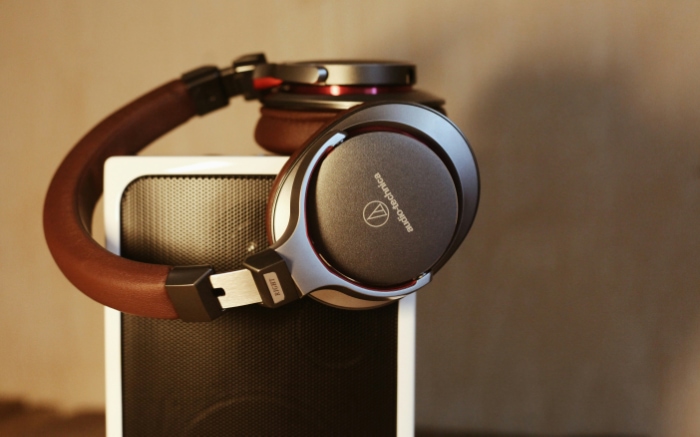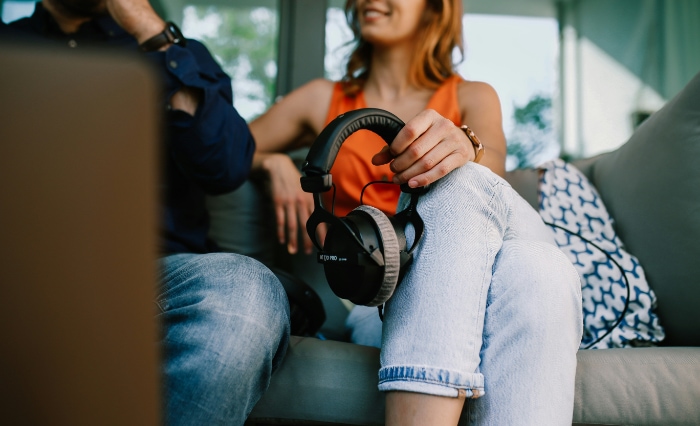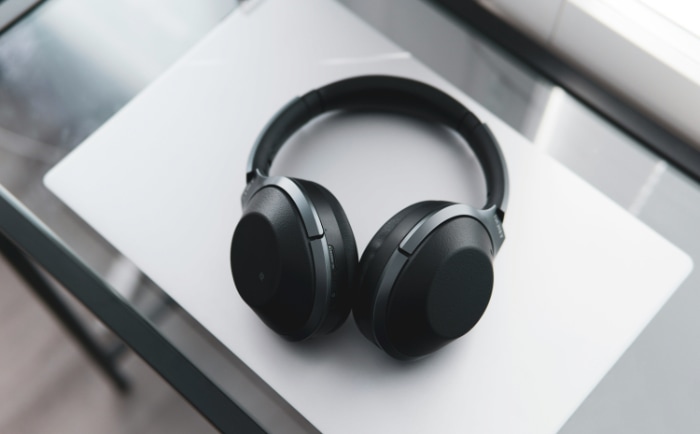Noise Cancelling vs. Noise Isolating: The Quiet Choice

Settling into the hum of an airplane, or simply seeking solace in a favorite song, modern life often demands a retreat into our own audio bubble. Enter the heroes of our quest for sonic sanctuary: noise cancelling and noise isolating headphones.
While both technologies promise an escape from unwanted sound, they approach the challenge with distinct methods, offering unique benefits to users.
Noise Isolation
When we slip on a pair of headphones, many of us seek not just to hear our chosen audio but to also block out the surrounding noise. This is where noise isolating technology steps in, serving as your personal sound barrier between you and the world.
Imagine wrapping yourself in a blanket to keep warm. Noise isolating headphones work on a similar principle, but instead of keeping you warm, they create a seal around your ears or ear canal to block external noise.
This technology doesn’t rely on any electronic tricks. It’s all about creating a physical barrier that prevents unwanted sound waves from reaching your ears.
The Mechanics Behind Noise Isolation
The effectiveness of noise isolation boils down to how well the headphones can seal your ear from the external environment. Over-ear headphones achieve this with padded cups that envelop your ears, while in-ear models use tips that fit snugly inside the ear canal.
The better the fit, the less noise you’ll hear from the outside world. It’s a simple yet effective way to keep distractions at bay, allowing you to focus purely on the sound you want to hear.
Materials and Design: Crafting the Perfect Seal
The materials and design of headphones are critical in achieving effective noise isolation. Memory foam, silicone, and rubber are commonly used in ear tips for in-ear headphones, adapting to the shape of your ear canal for a tighter seal.
Over-ear headphones, on the other hand, might use plush padding materials that not only improve comfort but also enhance the seal around the ears. Additionally, the overall design of the headphone, including how it fits and the pressure it applies, plays a significant role in its ability to isolate noise.
It’s a blend of science and art, aiming to provide both comfort and silence in a noisy world.
Noise Cancelling
Noise cancelling headphones do more than merely block out the world—they smartly silence it. Unlike their noise isolating counterparts, these headphones use advanced technology to actively eliminate the sound around you, creating a serene audio environment even in the noisiest settings.
Noise cancelling technology is akin to having a volume knob for the world around you, allowing you to dial down distracting background noise. This isn’t achieved through a physical barrier but through sophisticated electronic processes that identify and nullify external sound waves before they reach your ears.
The Two Types: Active and Passive Noise Cancelling
While often discussed under a single term, noise cancelling technology branches into two distinct types: active and passive.
- Active Noise Cancelling (ANC) goes beyond the passive blocking of sound. It involves the use of built-in microphones and electronic circuits to produce sound waves that are the exact opposite of external noise, effectively cancelling it out. This technology requires power, typically from a battery, to function.
- Passive Noise Cancelling refers to the reduction of sound through the physical materials of the headphones themselves, similar to noise isolation. This type doesn’t actively counteract sound waves with opposing sound waves but relies on the design and materials to block out noise. All headphones offer some degree of passive noise cancellation by virtue of their materials and fit.
The Science Behind Active Noise Cancelling
Active noise cancelling headphones are marvels of modern engineering. They constantly listen to the environment around you with built-in microphones.
These microphones send the external noise they pick up to a processing unit, which quickly generates a sound wave that is the mirror image of the incoming noise. When these opposing sound waves meet, they cancel each other out through a phenomenon known as “destructive interference.” The result? You hear a significantly reduced level of noise, if any at all, allowing your music or silence to take center stage.
This process doesn’t just create a quiet backdrop for your music; it actively erases the sound of your surroundings, offering a unique listening experience that can make a crowded subway car sound as tranquil as a quiet room.
Deciphering the Differences: Noise Cancelling vs. Noise Isolating

Choosing between noise cancelling and noise isolating headphones can feel like navigating a maze of technical jargon. Yet, the core of this choice lies in understanding how each technology works and its impact on your listening experience.
How They Work: The Fundamental Mechanisms
Noise isolating headphones rely on a physical barrier to block external sounds. Think of them as a protective wall between your ears and the outside world, using materials and design to keep unwanted sound at bay.
In contrast, noise cancelling headphones employ an active process. They listen to the world around you and create sound waves that are the exact opposite of the noise, effectively cancelling it out.
This requires electronic components, including microphones and battery-powered circuitry, to achieve silence.
Effectiveness Across Various Environments
On a bustling city street, noise isolating headphones can effectively reduce the sound of people talking or the distant hum of traffic by simply blocking them out. However, they might struggle with sudden, sharp noises, like a car horn.
Noise cancelling headphones shine in environments with consistent, low-frequency sounds, such as the drone of an airplane engine. They can make a long flight feel significantly quieter, creating a peaceful bubble of sound.
However, they may not be as effective in completely silencing unpredictable, high-frequency sounds.
The Impact on Audio Quality and Listening Experience
Noise isolating headphones can offer a pure, unaltered listening experience because they don’t rely on any external power or electronic processing to eliminate noise. The sound you hear is exactly as it was intended, without any potential electronic interference.
Noise cancelling headphones, on the other hand, may slightly alter the audio quality due to the electronic processing involved in cancelling out noise. Some users report a subtle hiss when the noise cancellation is active but no music is playing.
However, advancements in technology have minimized this effect, offering a high-quality audio experience that many find preferable in noisy environments.
Power Requirements: The Need for Batteries
One of the most practical differences between noise isolating and noise cancelling headphones is the need for power. Noise isolating headphones require no power source; their effectiveness is purely mechanical.
This means no charging, no batteries, and no worrying about running out of juice.
Noise cancelling headphones need power to run their sound-canceling magic. This usually comes from built-in rechargeable batteries. While battery life has improved, with some models offering up to 20 hours of use or more on a single charge, it’s still something to consider, especially for long trips or if you’re prone to forgetting to charge your devices.
Weighing the Pros and Cons

Every technology comes with its set of advantages and drawbacks, and the world of headphones is no exception. By comparing the pros and cons of noise isolating and noise cancelling headphones, we can get a clearer picture of which type might suit our individual needs and preferences better.
Noise Isolating Headphones: The Silent Shield
Noise isolating headphones serve as a physical barrier against the intrusion of external sounds, leveraging their design and materials to create a quiet listening environment.
Advantages
- Cost-Effectiveness: Generally, these headphones are more affordable than their noise cancelling counterparts. They don’t require complex electronic components, making them accessible to a wider audience.
- No Need for Batteries: Without the necessity for electronic noise cancellation, these headphones don’t need to be charged. This means you can use them anytime, anywhere, without worrying about battery life.
- Preservation of Audio Quality: Because there’s no digital processing involved, the audio playback is as close to the original recording as possible. This can be particularly appealing to audiophiles who value audio fidelity.
Disadvantages
- Limitations in Noise Reduction: While effective against many types of ambient noise, they might not be as capable of muting low-frequency sounds, like the rumble of an airplane engine or heavy machinery. This can be a significant drawback for frequent travelers or people working in noisy environments.
Noise Cancelling Headphones: The Sound of Silence
By actively cancelling out external noise, noise cancelling headphones aim to provide an unparalleled quiet listening experience.
Advantages
- Superior Noise Reduction: For environments with consistent, low-frequency sounds, these headphones excel. They can turn a noisy cafe or a droning airplane cabin into a haven of peace, allowing you to focus or relax with ease.
- Enhanced Listening Experience: By reducing the need to turn up the volume to overcome background noise, these headphones can help preserve hearing and make listening to music or podcasts more enjoyable and immersive.
Disadvantages
- Effect on Audio Fidelity: The process of noise cancellation can sometimes introduce a slight hiss or affect the naturalness of sound. While this is increasingly less of an issue with new models, it’s a factor to consider for the most discerning listeners.
- Higher Cost and Battery Dependency: The sophisticated technology behind noise cancellation comes at a price, both in terms of the initial purchase and the ongoing need to charge the headphones. This can be a downside for those looking for a simple, maintenance-free listening solution.
Finding Your Sound
Choosing the right headphones involves more than just comparing features on paper. It’s about considering how and where you’ll use them, as well as what sound experience you’re seeking.
Deciding between noise isolating and noise cancelling headphones often comes down to your typical listening environments and what you want to block out.
- Noise Isolating Headphones: Ideal for those who prefer a more natural sound without the need for electronic processing. They’re great for everyday use, like commuting, studying in a cafe, or enjoying music at home. They excel in environments where you want to reduce noise but still stay aware of your surroundings.
- Noise Cancelling Headphones: Best suited for frequent travelers or anyone working in consistently noisy environments. They’re particularly effective against the drone of airplane engines, train noise, or the hum of office equipment, creating a quiet zone that allows for focused work or restful silence.
The Role of Personal Preference
Your choice should also reflect your personal preference for sound quality and listening experience. Some may find the slight pressure sensation of active noise cancelling to be uncomfortable, preferring the passive sound blockage of noise isolating headphones.
Conversely, others might prioritize the silence that active noise cancelling provides, especially for long study sessions or flights.
Other Factors to Consider
While the technology behind the headphones is crucial, several other aspects deserve attention before making your decision:
- Comfort: No technology can compensate for uncomfortable headphones. Consider the earcup design, weight, and materials, especially if you wear your headphones for extended periods.
- Price: Noise cancelling headphones typically come with a higher price tag due to their advanced technology. Determine if the benefits justify the cost for your budget and lifestyle.
- Intended Use: Think about how you plan to use your headphones. If you’re traveling, active noise cancelling might be worth the investment. For casual listening, noise isolating headphones could be the smarter, more cost-effective choice.
- Battery Life: For noise cancelling headphones, battery life is a key consideration. Ensure the headphones you choose have enough battery life to meet your needs, or consider models with an option to use them as passive (wired) headphones when out of power.
Conclusion
Noise isolating headphones offer a straightforward, battery-free solution to reduce ambient noise, ideal for those who value simplicity and audio fidelity. On the flip side, noise cancelling headphones bring advanced technology to the table, actively erasing the clamor of the outside world, perfect for frequent travelers or anyone seeking solace in noisy environments.
Yet, the decision extends beyond technology. Comfort, price, and the specific contexts in which you’ll be using your headphones all play crucial roles in making the right choice.
Whether you’re looking to enhance your focus in a bustling café or seeking peace on a long-haul flight, there’s a pair of headphones designed to meet your needs.


